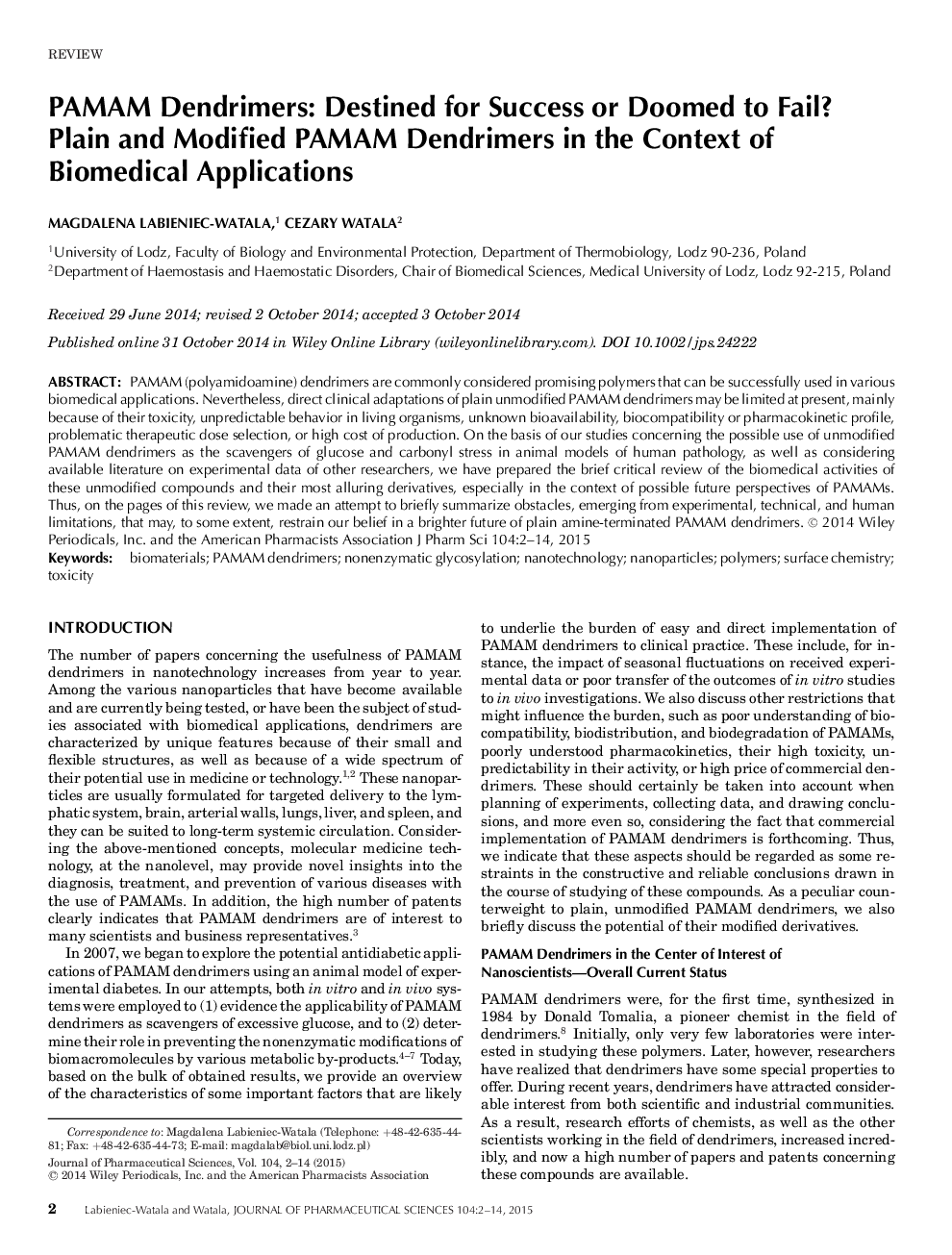| Article ID | Journal | Published Year | Pages | File Type |
|---|---|---|---|---|
| 2484616 | Journal of Pharmaceutical Sciences | 2015 | 13 Pages |
Abstract
PAMAM (polyamidoamine) dendrimers are commonly considered promising polymers that can be successfully used in various biomedical applications. Nevertheless, direct clinical adaptations of plain unmodified PAMAM dendrimers may be limited at present, mainly because of their toxicity, unpredictable behavior in living organisms, unknown bioavailability, biocompatibility or pharmacokinetic profile, problematic therapeutic dose selection, or high cost of production. On the basis of our studies concerning the possible use of unmodified PAMAM dendrimers as the scavengers of glucose and carbonyl stress in animal models of human pathology, as well as considering available literature on experimental data of other researchers, we have prepared the brief critical review of the biomedical activities of these unmodified compounds and their most alluring derivatives, especially in the context of possible future perspectives of PAMAMs. Thus, on the pages of this review, we made an attempt to briefly summarize obstacles, emerging from experimental, technical, and human limitations, that may, to some extent, restrain our belief in a brighter future of plain amine-terminated PAMAM dendrimers. © 2014 Wiley Periodicals, Inc. and the American Pharmacists Association.
Keywords
Related Topics
Health Sciences
Pharmacology, Toxicology and Pharmaceutical Science
Drug Discovery
Authors
Magdalena Labieniec-Watala, Cezary Watala,
